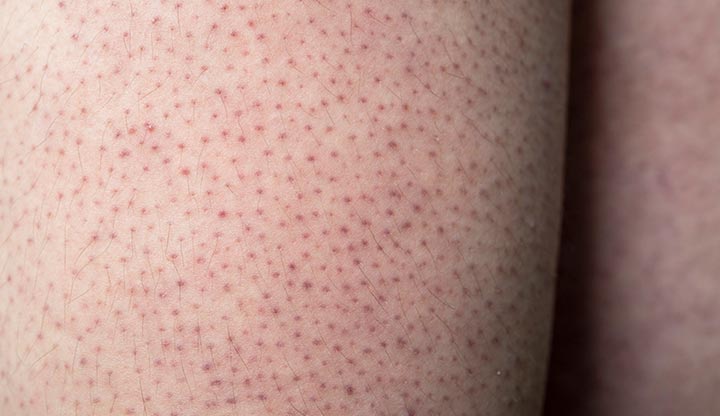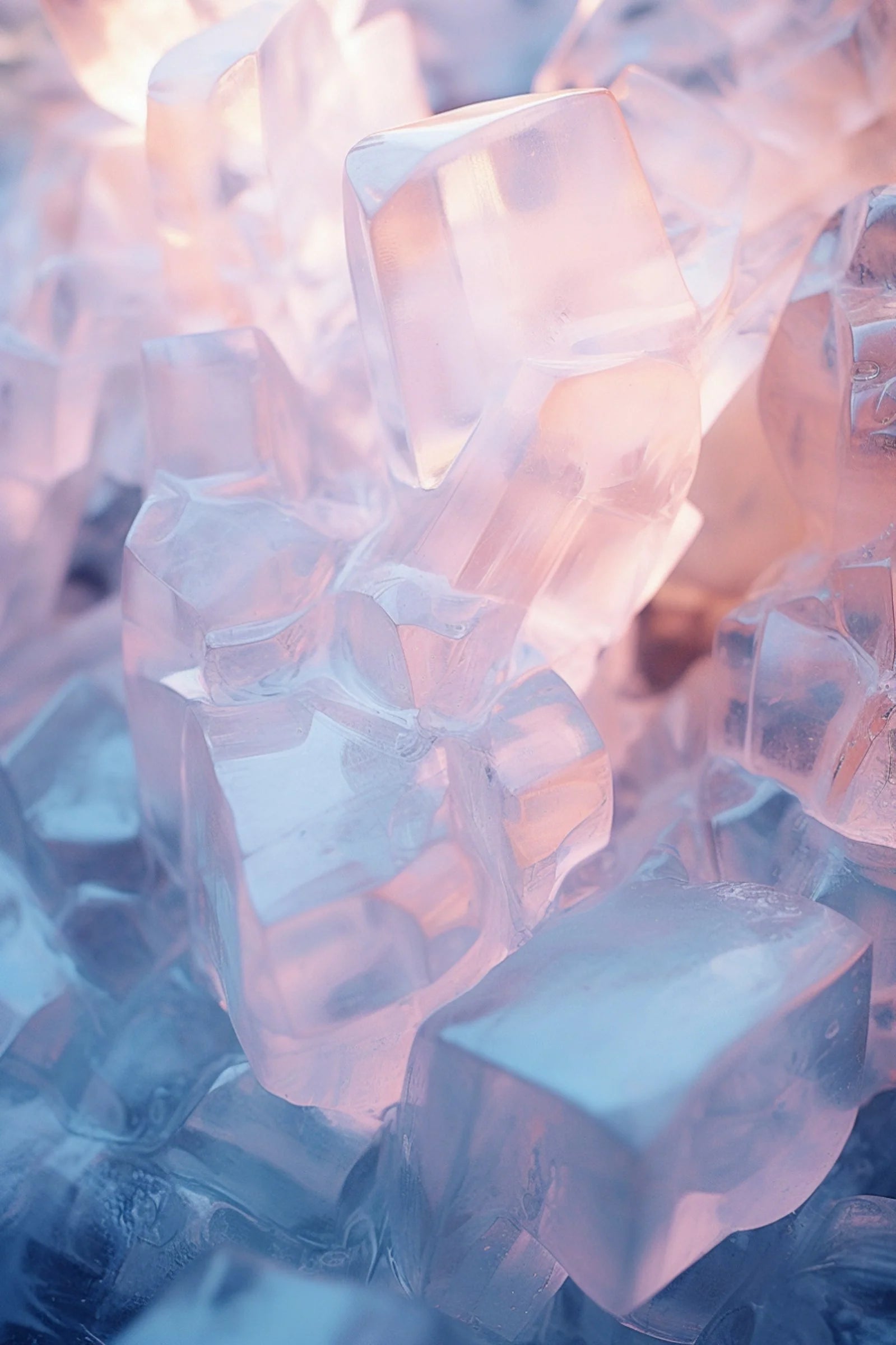How to treat Keratosis Pilaris
Sabina JasinskiTiny bumps. Dry patches. That sandpaper-like texture on the backs of your arms or thighs? That’s keratosis pilaris (KP)—a harmless but often stubborn skin condition sometimes called “chicken skin.” While KP isn’t dangerous, it can be frustrating and persistent, especially if you’re aiming for smooth, even-toned skin.
The good news? With the right combination of gentle exfoliation, deep hydration, and barrier support, you can dramatically soften and improve its appearance—without scrubbing or irritating your skin.
In this guide, you’ll learn:
- What causes KP and how to identify it
- The best ingredients to smooth texture and reduce roughness
- A step-by-step body care routine that actually works
- Smart habits that prevent flare-ups and improve long-term results
Whether your KP is mild or more widespread, this guide will help you manage it with confidence and care.
Because real skin is textured—and caring for it should be simple, soothing, and sustainable.
WHAT IS KERATOSIS PILARIS?
Keratosis pilaris (KP) is a build-up of keratin, the protein that protects the skin. In KP, keratin blocks the hair follicles, leading to:
- Small, rough bumps (often flesh-colored or red)
- Dry or “sandpaper” texture
- Patches on upper arms, thighs, buttocks, or cheeks
- Bumps that sometimes resemble tiny pimples—but with no pus or inflammation
KP is genetic and more common in people with dry skin, eczema, or asthma. It often worsens in cold weather or when the skin is dehydrated.
WHAT CAUSES Keratosis Pilaris?
- The skin produces excess keratin, which plugs the follicle openings
- This results in a rough, bumpy texture
- Dead skin cells are not shed properly, compounding the buildup
- The follicle becomes raised, but usually not inflamed
KP is a form of follicular hyperkeratosis and is not contagious or harmful, but it can be persistent and cosmetically frustrating.
evidence-based treatments
1. EXFOLIATE REGULARLY—BUT GENTLY
The key to improving KP is consistent chemical exfoliation to loosen dead skin and clear follicle plugs. Skip physical scrubs—they often irritate the skin.
Top exfoliating ingredients include:
- Lactic acid (AHA): Hydrating and gentle, ideal for dry or sensitive skin
- Glycolic acid (AHA): Effective at smoothing rough texture
- Salicylic acid (BHA): Penetrates deeper into follicles to clear buildup
- Urea (10–20%): Both exfoliates and hydrates—ideal for KP
Use once daily or every other day, depending on sensitivity.
2. MOISTURISE DAILY TO SUPPORT SMOOTHER SKIN
Hydration softens the bumps and helps prevent further keratin buildup.
Look for:
- Ceramides, glycerin, or squalane to restore the barrier
- Urea or lactic acid in moisturisers for combined exfoliating + hydrating action
- Fragrance-free formulations to reduce risk of irritation
Apply moisturiser immediately after bathing while skin is still damp.
3. USE TARGETED BODY TREATMENTS
If your KP is persistent, try layering a treatment lotion or serum under your moisturiser, such as:
- Lactic acid lotion (10–12%)
- Urea cream (10–20%)
- Azelaic acid for redness or pigmentation on cheeks
Apply on clean, dry skin before your moisturiser. Avoid layering with strong retinoids or AHAs unless directed by a professional.
4. AVOID TRIGGERS & FRICTION
While KP is mostly genetic, some habits can worsen it:
- Avoid scrubbing or picking the bumps
- Wear loose, breathable clothing to reduce friction
- Use gentle, fragrance-free cleansers on body skin
- Keep showers short and lukewarm, not hot
Example routine
MORNING:
Smooth, Hydrate, and Protect
1. Gentle Body Cleanser (Fragrance-Free)
Start with a body wash that won’t strip or irritate KP-prone skin.
- Look for creamy or non-foaming cleansers with glycerin, colloidal oatmeal, or panthenol
- Avoid sulfates, drying alcohols, and added fragrance
KP skin is already prone to dryness—keeping the barrier intact during cleansing is key.
2. Exfoliating Body Lotion
Apply a lightweight exfoliating treatment to target rough texture and follicular buildup.
Best actives for morning use:
- Lactic acid (5–10%)
- Urea (10–20%)
- Salicylic acid (BHA) for thicker or oilier areas
Apply directly after cleansing while the skin is slightly damp for better absorption.
3. Barrier-Reinforcing Moisturiser
Seal in hydration and help prevent future keratin buildup.
- Choose moisturisers with ceramides, squalane, urea, or shea butter
- Look for a non-greasy formula if applying under clothing
4. Broad-Spectrum Body SPF (if exposed)
Sun exposure can darken KP-prone areas and increase post-inflammatory pigmentation.
- Use SPF 30–50 on arms, legs, or shoulders if skin is visible
- Choose a lightweight, fragrance-free formula to avoid clogging follicles
Bonus: Sunscreen protects from long-term damage and supports more even skin tone.
EVENING:
Exfoliate, Deeply Nourish, and Restore
1. Cleanse with Lukewarm Water + Gentle Body Wash
- Skip hot water—it can worsen dryness and texture.
- Use your same fragrance-free, low-foam cleanser from the morning
- Keep showers short and skin pat-dried—not rubbed
2. Apply Targeted Treatment
Evening is the best time for stronger actives to work uninterrupted.
- Apply a urea 20% lotion, lactic acid, or azelaic acid
- Focus on the arms, thighs, or any areas where bumps are most visible
Use every night or alternate with barrier creams if skin feels dry.
3. Follow with Rich Moisturiser
Replenish hydration lost throughout the day and support overnight repair.
- Look for shea butter, lanolin, ceramides, or cholesterol
- For extra dry skin, choose a thicker formula or ointment-style balm
4. Seal with a Body Oil or Balm (optional)
Add an occlusive layer over dry patches or after moisturiser to lock in moisture.
- Use squalane oil, jojoba, or a balm like Vaseline or lanolin
- Especially helpful on elbows, knees, or backs of arms
This final step can dramatically improve skin smoothness and reduce flakiness over time.
WHEN TO EXPECT RESULTS
- Smoother texture: 2–4 weeks with daily exfoliation
- Reduced redness or pigmentation: 6–8 weeks, especially with azelaic acid or niacinamide
- Long-term improvement: Best results come from maintenance, not aggressive treatments
Bonus
Tips
- Be patient: KP takes 4–6 weeks of consistent care to visibly improve
- Don’t over-exfoliate: Too much acid or scrubbing can inflame the skin and worsen redness
- Layer smartly: Use exfoliant first, then moisturiser, and seal with balm if needed
- Stay consistent—even when it looks better. KP returns quickly when left untreated.
Lifestyle Habits to Support Smooth, KP-Free Skin
1. Hydration Starts From Within
Dry skin can make KP feel more pronounced. Support your skin by staying hydrated throughout the day.
2. Shower Smarter
- Keep showers short and lukewarm
- Use fragrance-free body washes
- Moisturise within 3 minutes of towel-drying for better barrier support
3. Choose Soft, Breathable Fabrics
- Friction can make KP-prone areas (like arms or thighs) more inflamed.
- Stick to cotton, bamboo, or modal
- Avoid rough seams, scratchy fabrics, or tight-fitting clothes that rub against the skin
4. Be Gentle with Your Skin
It’s tempting to scrub KP bumps away—but harsh scrubs or loofahs can inflame the follicles and lead to redness or post-inflammatory hyperpigmentation.
- Use chemical exfoliants (like urea or lactic acid), not rough scrubs
- Apply with your hands or a soft cloth—never exfoliate on broken or sensitive skin
5. Stay Consistent, Even When Skin Looks Smooth
KP often returns quickly when neglected. Even when your skin is soft and clear, maintenance is key.
- Keep using gentle exfoliants 2–3x per week
- Moisturise daily, especially in drier months or after shaving
6. Protect KP-Prone Skin from the Sun
While sun exposure can temporarily hide KP, it can also dry out the skin and cause pigmentation in bumpy areas.
- Use a body SPF 30–50 on arms, legs, or cheeks when exposed
- Consider physical barriers (clothing, shade) during peak UV hours
Common Myths
“It’s acne.”
KP is not acne—it’s a buildup of keratin, not sebum or bacteria.
-
“Scrubbing it will make it go away.”
Actually, scrubbing can irritate KP and make bumps look worse.
-
"It only affects teens.”
KP often begins in childhood and can persist into adulthood.
💚 Final Thoughts
Keratosis pilaris is common, harmless, and treatable with the right routine. Focus on gentle exfoliation, consistent hydration, and barrier-friendly habits—and over time, you’ll see smoother, clearer skin.
Because texture doesn’t define healthy skin—how you treat it does.
guides to healthier skin:
Skin Concerns Series
From hyperpigmentation to hydration, the Skin Concerns Series by Know to Glow breaks down common skincare issues with clarity, science, and strategy.
Each guide is designed to help you understand the root causes, avoid common mistakes, and build a routine that actually works.
Skin Concerns Series
KNOW TO GLOW = SCIENCE+EDUCATION
Know to Glow is both a shop and a hub for essential skincare knowledge. Our goal is to help you achieve healthy skin by understanding the biology behind skincare—what nourishes it and what can compromise it.





